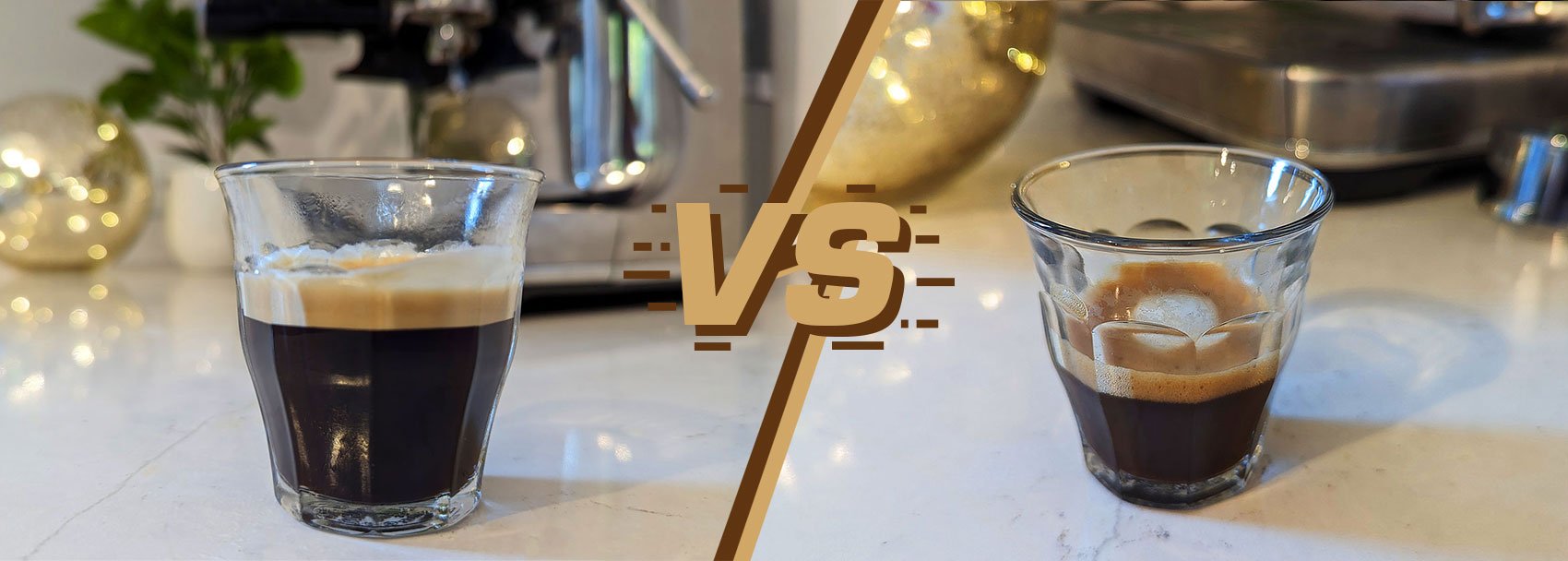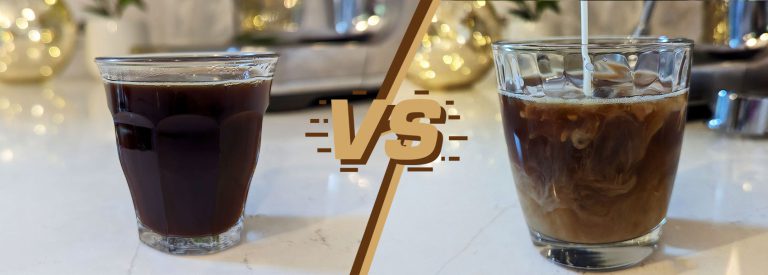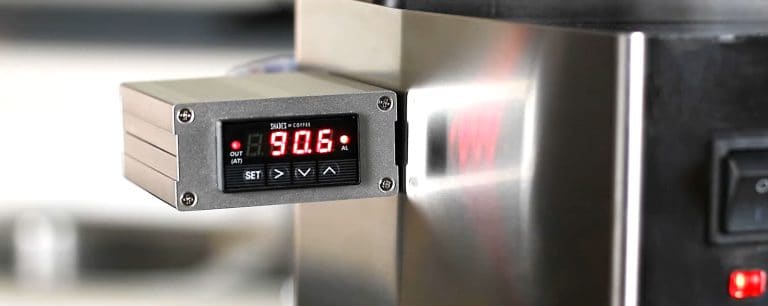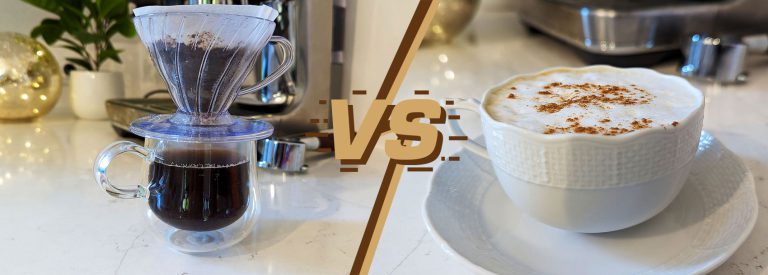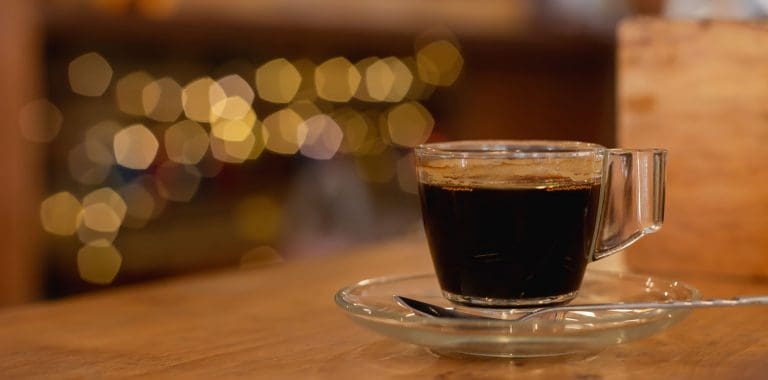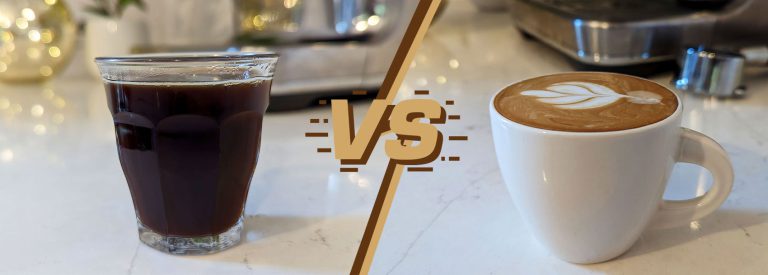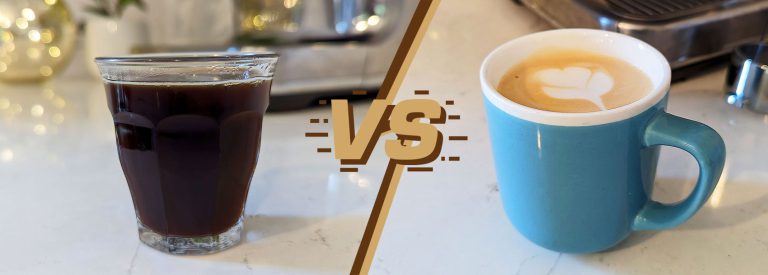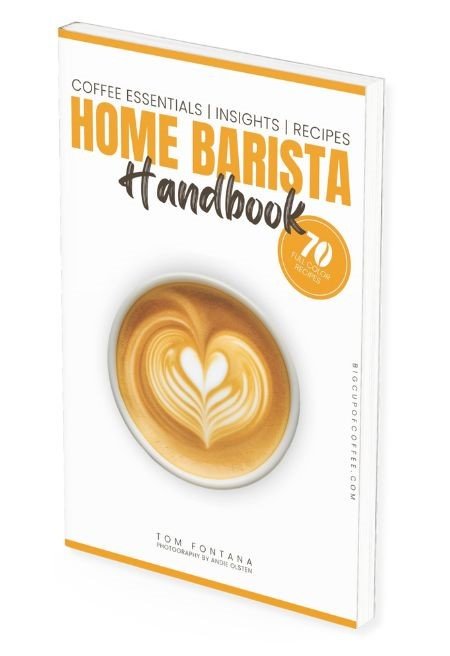Espresso vs Macchiato: The Milk Dollop Difference
Espresso and macchiato are well-known and ordered at cafes far and wide, especially in Italy.
If you find yourself puzzled by what differentiates the two, don’t worry, we can fix that. Read on as I explain these coffee beverages in detail, from their origins to their recipes and taste.
By the time you’re done with this article, you’ll know each drink’s unique qualities and shared traits just like a pro.
What is an Espresso?
The history of espresso dates back to 1901 when Italian businessman Luigi Bezzera patented the first espresso machine. The idea was to produce coffee quickly by forcing hot water through finely-ground beans under high pressure, typically 9 bars.
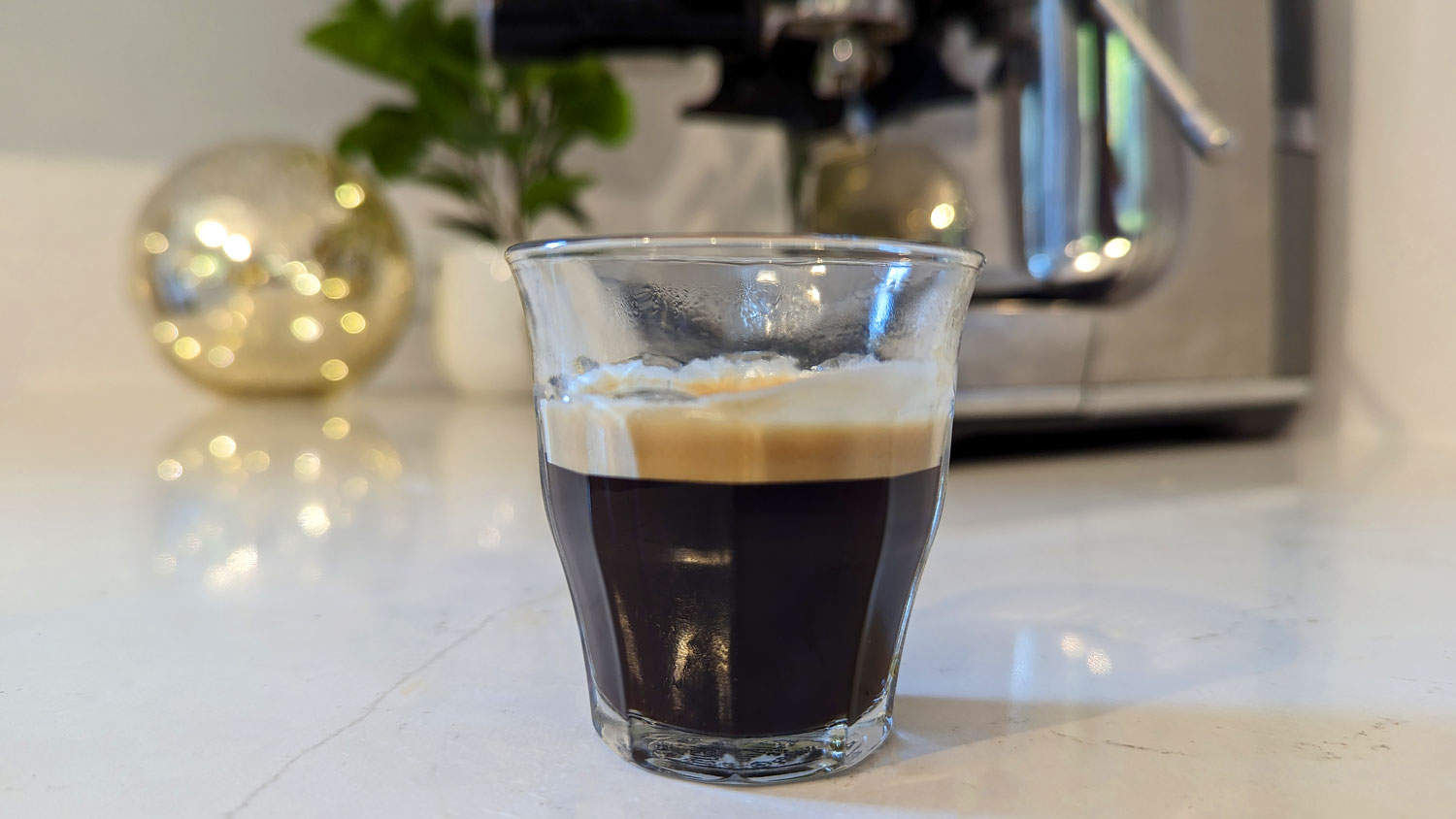
Espresso uses a coffee-to-water ratio of 1:2 to 1:3, to produce 1 oz (30 ml) of coffee for a single shot and 2 oz (60 ml) for a double shot. These are served in an espresso cup called demitasse, that can hold 60-90 milliliters (2-3 US fl oz).
To brew espresso, you need 7g of coffee for a single shot and 14g for a double. Third-wave coffee adjusts this to 9g and 18g respectively. With these amounts of coffee, a shot’s caffeine content ranges from 60 to 80 mg while the calorie count is only 2.
So it’s sipping time. Expect your espresso to have a robust and concentrated flavor, slowly unveiling notes of chocolate or caramel with hints of nuttiness depending on your bean roast. The texture is syrupy with a rich and full body. On top is the crema that adds a velvety feel and slight bitterness to your coffee (so be sure to give it a swirl or stir with a spoon, even if you drink it black).
Here’s how you can pull a shot of espresso:
- Weigh and dose your coffee.
- Grind with the fine grind setting.
- Level your coffee in the portafilter.
- Tamp consistently.
- Connect it to the espresso machine and pull your shot.
- Analyze the taste and make adjustments accordingly.
If you’re keen to perfect your espresso-making skills, check out my detailed guide on how to make an espresso.
Now let’s find out what makes a macchiato.
What is Macchiato?
Macchiato, an Italian word meaning “stained” or “marked”, gives us a hint about what this drink is all about – an espresso “marked” with just a bit of milk froth. This unique combination originated in Italy and adds just a touch of creaminess to the strong and rich flavor of espresso.
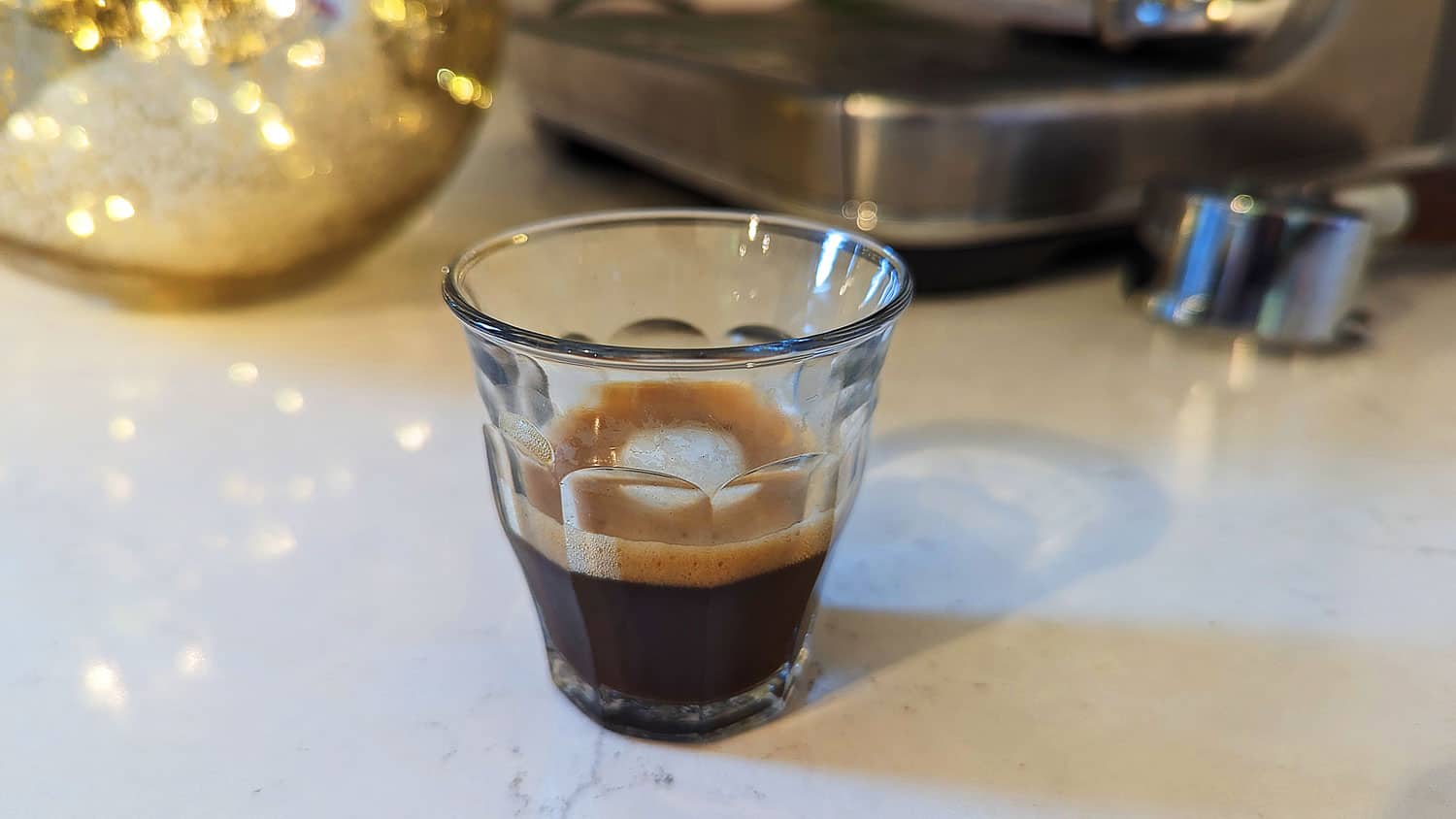
The standard coffee-to-water ratio for the espresso in a macchiato remains 1:2 to 1:3, with 7g of ground coffee for a single shot and 14g for a double shot (For third-wave coffee, it’s 9g for a shot and 18g for a double). It is then “stained” with a dollop (about a spoonful) of whole milk froth on top.
A serving of Macchiato is 1.3 to 2 oz (39-60 ml) poured into a demitasse that can hold 60-90 milliliters (2-3 US fl oz). Each cup carries about 8 calories with 60 to 80 mg per 1 oz shot of espresso you used.
Flavor-wise, the drop of milk froth in a macchiato slightly softens the boldness of espresso. It’s just a hint of creaminess but the intensity of the coffee remains, making it a favorite among drinkers who want a less milky espresso-based beverage. The milk also adds depth to the drink’s texture, but only a little.
Now the amount of milk varies by café, but if we use the Italian version as the main recipe, it is just a few ml of milk.
Note that there’s also the modern take on Macchiato, which adds about 15-20ml of steamed milk into the mix instead of milk froth.
And don’t get me started on the Starbucks version, it adds almost as much milk as a latte.
Want to make a proper macchiato? Here’s how:
- Brew a shot of espresso.
- Make warm frothed milk.
- Add a dollop of milk froth for a traditional touch or a bit of steamed milk for a modern twist.
For a deeper dive into the art of Macchiato-making, have a look at my guide on how to make a Macchiato.
Espresso vs Macchiato: Which One Suits You Better?
Here’s an overview of the characteristics of espresso and macchiato side by side to see how they compare:
| Aspect | Espresso | Macchiato |
|---|---|---|
| Taste and Texture | Light to medium roasts are preferred, though traditional Italian uses dark roast. | Strong, dense, syrupy, with a touch of creaminess from the milk. |
| Coffee-to-Water Ratio | 1:2 to 1:3 | 1:2 to 1:3 for the espresso part. |
| Ingredient Ratio | Just coffee. | 1 shot of espresso & a dollop of milk. |
| Typical Serving Size | 1 oz (30 ml) for a single shot, 2 oz (60 ml) for a double shot. | 1.3 to 2 oz (39-60 ml). |
| Caffeine Content | 60-80 mg per 1 oz shot. | 60-80 mg per 1 oz shot of espresso used. |
| Calories | 2 calories per shot. | 2 calories per shot of espresso, plus about 8 calories from the milk dollop. |
| Acidity | Moderate acidity. | Moderate acidity. |
| Brewing Difficulty | Intermediate. | Home barista. |
| Bean Roast | Light to medium roasts preferred, though traditional Italian uses dark roast. | Medium roasts are ideal. |
Now, let’s break down these two drinks in detail:
- Ground Coffee Weight & Ratios: A single shot of espresso uses 7g of ground coffee for a single shot and 14g for a double shot (or 9g and 18g respectively for third-wave coffee), following a brew ratio of 1:2 to 1:3.
The espresso in a macchiato uses the same amount of ground coffee and ratio, just with a dollop of milk after brewing. - Taste: Espresso offers a balance of sweetness, bitterness, and a bit of acidity with potential chocolate or caramel undertones and some nuttiness.
As for macchiato, the milk slightly mutes the espresso’s boldness, providing a rich yet mellowed flavor that doesn’t drown the intensity of coffee. - Volume, Calories, & Caffeine: Both drinks have a similar caffeine content of 60 to 80mg per shot. But macchiato has more volume at 1.3 to 2 oz per serving compared to espresso’s 1 to 2 oz. It also has slightly more calories, with the milk dollop adding 8 calories to espresso’s 2 calories per shot.
- Bean Roast: Light to medium roasts are my favorite when brewing espresso as the vibrant flavors really shine. Sometimes I recreate traditional Italian espresso which uses dark roast Arabica blended with some robusta.
Then for Macchiato, I always opt for medium roasts that strike that right balance when combined with a little bit of milk froth. - Milk: Espresso doesn’t use milk while macchiato incorporates a little bit of milk froth. Check out my guide to frothing milk for your coffee if you need extra information on this.
If you want to make a modern macchiato, that’s when you will add steamed milk, but not as much as a latte has. - Serving Suggestions: For a genuine espresso experience, having a glass of sparkling water on the side can cleanse your palate and let you really taste the nuances of your coffee.
A macchiato, being a middle ground between the strong espresso and milky cappuccino, is perfect if you seek balance in your brew.
Espresso and macchiato are not too different from each other. It’s just a dollop of milk froth that differentiates the two, but it fills a gap for those who want their espresso just a little bit tamed.
TIP: You can’t make great espresso and macchiato if you compromise on your coffee beans. To help you get started, check out my list of the top coffee beans for espresso this 2025.
Conclusion
Each drink has its own desirable traits to satisfy coffee lovers. But personally, I lean toward espresso. With the macchiato, the reduced robustness is not my cup of tea. Or coffee…
That’s just my two cents though. How about you, if you were to pick a better drink between the two, which one would win? Share it in the comment section below.

